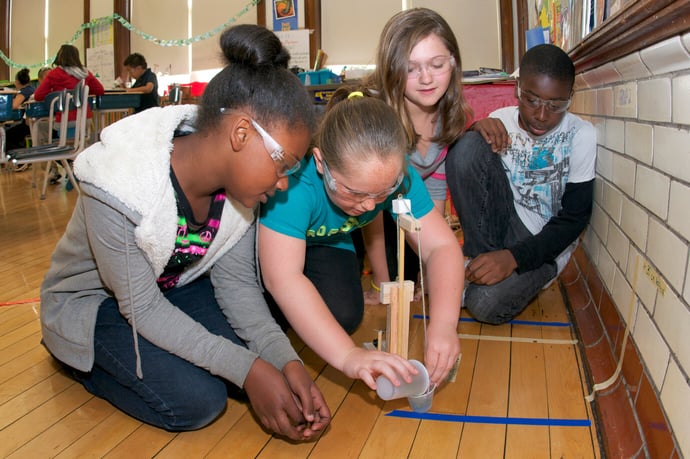Changing the "what" and "how" in science education doesn't have nearly as much impact as looking at the "why."

SALEM, Mass., (Newswire.com) - Typical conversations about education reform revolve around things like how we teach (education policy) or what we teach (the curriculum). But today, according to Dr. Ron Ritchhart, world-renowned educator, researcher, and author, and Francis Vigeant, KnowAtom's Founder and CEO, changing the "what" and "how" in K-8 science education under NGSS doesn't have nearly as much impact as looking at the "why."
In KnowAtom's leader panel "Improving Engagement and Performance: Key Thinking Moves All Instructional Leaders Should Look for K-8," Dr. Ritchhart and Vigeant explained that teachers who evaluate why they teach what they teach will make decisions that lead to deeper student learning and preparation for long-haul learning.
First, they challenged the audience to examine how the status quo in next-generation science education actually works.
- Transmission-style teaching: Students become dependent on a textbook, teacher, or app to tell them what they should know.
- Focus on short-term performance: Teach the students some information, give them a test, see the results, and call it learning. While this is good for the test at the moment, it doesn't work for long-term learning.
- Emphasis on reproducing results: When students are given a task or project, the goal is for all of them to replicate the teachers' results—or each other's—to show they have learned something with little independent inquiry.
- Simplified learning: Teachers often assume students need their subject matter made easier or "fun" so that they can understand it and don't create instructional environments that challenge them to look beyond what the teacher presents.
- Concentration on review: Questions in the classroom often ask students to repeat what they've learned before and don't extend beyond the curricular material.
What all of these have in common is that the students aren't being authentically challenged to think for themselves. They are repeating and reciting information, but they aren't internalizing it and understanding how what they're learning connects together.
Instead, the panelists advocated for teachers to create a culture of thinking, where teachers are as invested in next-generation science lessons and an environment focused on nurturing curiosity about phenomena.
Embrace Challenges
For students to have a deeper understanding, they need tasks that reflect that goal. They don't need to start at lower-level tasks because the tasks targeted at the upper levels will teach the lower-level skills as well.
The idea with KnowAtom curriculum is to help students struggle with next-generation science standards productively. Give them a chance to get stuck, figure out why they are stuck, and unstick themselves. If a teacher's why is to just complete the task, then the instructional focus is on completion. Effective teachers understand that it's in the grappling where the learning will happen.
Inspire Curiosity and Creativity
Rather than approaching a lesson with a set outcome and expected answers from students, think about how the students can explore a topic. What do they know? What do they want to know? What experiences have they had? The teacher can model their own curiosity as well. KnowAtom creates activities for the students that allow them to dig deeper into these questions.
Show a Genuine Interest in Student Thinking
Instead of questions motivated by reviewing content for an assessment, ask constructive questions that let students demonstrate their thinking. Let them share how they are making connections between concepts. When student thinking is made visible and supported, it can lead to greater engagement and deeper learning and understanding of the concepts.
Let Students Guide the Lessons
While there are concepts teachers need to emphasize, every lesson shouldn't just be making students curious about what you want to teach. KnowAtom supports a culture of thinking in classroom situations where you work on what students are curious about as it relates to the science phenomena. The classroom should be a place to talk about real-world situations that impact their lives and help them make connections between science at school and home.
Ultimately, the goal is to create a culture of thinking where students and teachers are investigating concepts and making connections. While teachers want their students to become more engaged in the classroom, switching to this method makes teachers feel nervous about not covering all of the content.
Dr. Ritchhart encouraged teachers to change their own thinking. Instead of sprinkling the content over the students over the course of the semester, think about providing magnets of deep understanding that will allow students to connect the smaller bits of knowledge.



